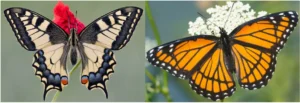Canoeing and kayaking, collectively known as paddling, encompass a diverse range of water-based activities that blend adventure, skill, and a deep connection with nature. Whether leisurely gliding along calm lakes, navigating roaring whitewater rapids, or embarking on multi-day expeditions, paddling offers something for everyone. This essay delves into the art of paddling, exploring its history, techniques, equipment, and the profound experiences it offers to enthusiasts worldwide.
History of Paddling:
Paddling traces its roots back thousands of years when indigenous peoples around the world relied on canoes and kayaks for transportation, hunting, and fishing. In North America, Native American tribes crafted canoes from birch bark and dugout logs, while the Inuit and Aleut peoples of the Arctic developed sleek, maneuverable kayaks for navigating icy waters. These early vessels were ingeniously designed to meet the specific needs of their environments, showcasing the ingenuity and craftsmanship of their creators.
As European explorers ventured into new territories, they adopted and adapted indigenous paddling techniques and technologies. Canoes became indispensable for fur traders, settlers, and explorers, facilitating the exploration and colonization of vast continents. In the 19th and 20th centuries, recreational paddling gained popularity as outdoor enthusiasts sought adventure and communion with nature, leading to the development of modern kayaks and canoes optimized for performance and safety.
Techniques of Paddling:
Mastering paddling requires a combination of physical skill, mental focus, and environmental awareness. Novices often begin with basic strokes such as the forward stroke, used for propulsion, and the sweep stroke, employed for turning. As paddlers progress, they learn more advanced techniques like the draw stroke, which pulls the boat sideways, and the brace, used to maintain stability in rough water.
Whitewater paddling presents additional challenges, demanding precise timing, agility, and quick reflexes. Expert whitewater kayakers navigate turbulent rapids, drops, and obstacles with grace and precision, employing a repertoire of maneuvers such as eddy turns, ferries, and peel-outs to negotiate complex currents and hazards.
Sea kayakers, on the other hand, must contend with open water, tidal currents, and unpredictable weather conditions. They master skills such as bracing, rolling, and navigation using charts and compasses to safely explore coastal environments and remote islands.
Equipment for Paddling:
Choosing the right equipment is crucial for a safe and enjoyable paddling experience. Canoes and kayaks come in a variety of shapes, sizes, and materials, each suited to different types of water and activities. Traditionalists may opt for wooden or canvas canoes reminiscent of bygone eras, while modern paddlers often prefer lightweight, durable kayaks made from fiberglass, plastic, or composite materials.
Paddles also vary in design and construction, with options ranging from simple wooden paddles to high-tech carbon fiber models with adjustable feathering angles. Personal flotation devices (PFDs), helmets, and spray skirts are essential safety gear, especially in whitewater and rough sea conditions where capsizing and entrapment pose serious risks.
Other equipment such as dry bags, bilge pumps, and safety whistles ensure preparedness for emergencies and unexpected situations. Proper clothing, including wetsuits or drysuits, insulating layers, and sun protection, helps paddlers stay comfortable and protected from the elements during extended outings.
Experiences in Paddling:

Paddling offers a multitude of experiences that appeal to people of all ages and backgrounds. For some, it’s a peaceful escape into nature, where the rhythmic sound of paddle strokes and the gentle sway of the boat provide a meditative retreat from the stresses of everyday life. Lakes, rivers, and coastal waters become playgrounds for exploration, wildlife viewing, and photography, fostering a profound sense of connection with the natural world.
For others, paddling is a thrilling adrenaline rush, with whitewater enthusiasts seeking out the biggest waves, steepest drops, and most challenging rapids. The exhilaration of successfully navigating a rapid or executing a difficult maneuver is unmatched, fueling a passion for adventure and pushing personal limits.
Multi-day expeditions offer yet another dimension to paddling, allowing adventurers to embark on epic journeys through remote wilderness areas inaccessible by road or foot. Paddlers pack lightweight camping gear, provisions, and navigation tools into their boats, setting off on self-supported trips that test their skills, endurance, and self-reliance.
Conclusion:
In conclusion, paddling is more than just a recreational activity; it’s a timeless pursuit that fosters a deep connection with nature, promotes physical fitness, and nurtures a sense of adventure and exploration. Whether gliding serenely across calm waters, tackling raging whitewater rapids, or embarking on multi-day expeditions, paddlers around the world share a common bond—a love for the water and the unparalleled experiences it offers. As we continue to paddle into the future, let us cherish and steward our waterways, preserving them for future generations to enjoy and explore.







Be First to Comment